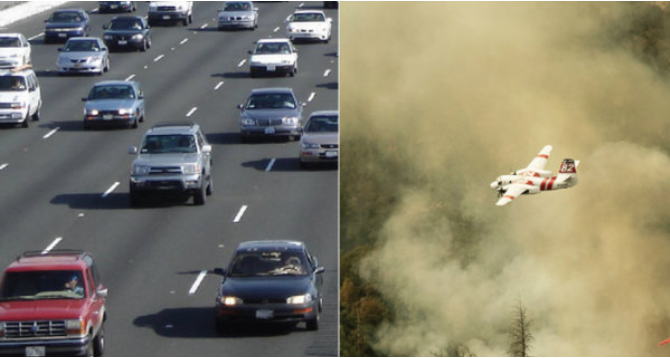CommentsTRANSIT TALK-By most accounts (and there are always skeptics) the recent wildfires that rampaged through California bringing fear, danger, destruction, and death, were unprecedented in their ferocity and strength.
What was an Autumn fire season in Southern California has become year-round. The general consensus is that fires have grown in intensity and frequency because of global warming and climate change.
Each year we are told that the earth is heating, with temperatures rising to new levels. And on average nights, the cooling balms that should ease the ravages of the day’s heat, are not as cold. We in California are in a seven-year drought, with last year’s one season reprieve giving way to more drought. Southern California had four inches of rain this past season. The seasonal average is nearly fifteen inches.
Northern California is burning with unprecedented ferocity. The Camp Fire razed the town of Paradise. There are now over eighty dead, and over seven hundred people missing. Over twelve-thousand structures are destroyed.
With rising temperatures and very little rain, vegetation dries to tinderbox conditions, and fires become raging beasts. The hillsides remain prone to more fires.
As a lifelong Los Angeles resident, I remember the major fires over the years, but they would happen in intervals of years, or decades. Indeed, the old mindset was a fire disaster would strike, and then years, even decades would pass before the next one. There was a rhythm to the fire disasters: fight them, flee if necessary, and should tragedy strike rebuild because the cycle would permit enough time to pass to try and design defenses and new strategies for protection. Now, every year sees a number of major fires bringing destruction and death.
This is what scientists warned us, that with global warming comes more fires storms, more frequently, and with greater intensity. Those predictions are reality now, and the situation is not going away. It’s getting worse.
The major culprit in the rising temperatures is the burning of fossil fuels, creating carbon gases which trap heat in the atmosphere. This comes mainly from burning of coal, petroleum and gas. Vehicle exhaust from petroleum products is a quickly rising factor, producing greater amounts of carbon gases.
It is a simple equation: the more we drive, the more carbon gases we put in to the atmosphere, and the more the earth’s temperature rises, creating these frequent, tragic firestorms.
While electric vehicles, which obviously do not emit carbon gases from exhaust, are one answer to reducing carbon gases, it will be decades before there are enough of them on the roads to reduce our emissions. A scientific panel convened by the United Nations recently stated that we have ten years to greatly reduce carbon gases before we reach truly catastrophic levels of environmental damage.
The quickest way to reduce our carbon gas is to reduce vehicle exhaust, which means we should stop driving so much. This is not a simple task to change a lifestyle, but there is no other option for reducing carbon emissions from vehicle exhaust in sufficient amounts, in sufficient time to counter rising temperatures.
This is not an easy task, but it must done. Whenever possible leave your car, SUV or truck parked. Ride buses and trains, and rediscover that ancient, intuitive mode of transportation: walking.
(Matthew Hetz is a Los Angeles native. He is a transit rider and advocate, a composer, music instructor, and member and president and executive director of the Culver City Symphony Orchestra.) Edited for CityWatch by Linda Abrams.















